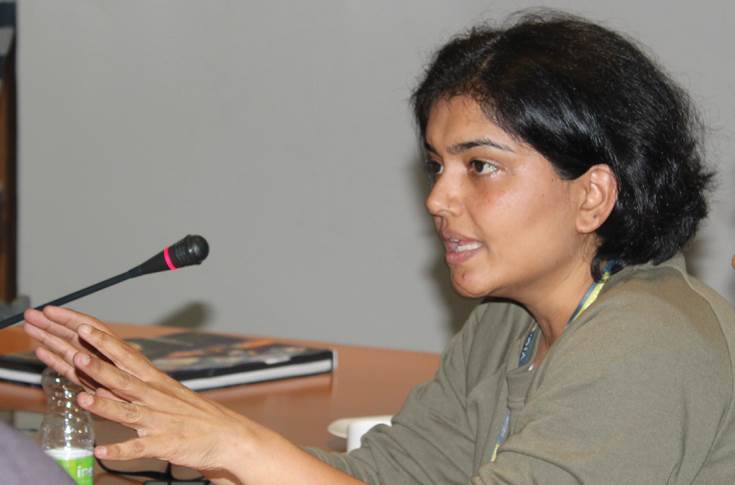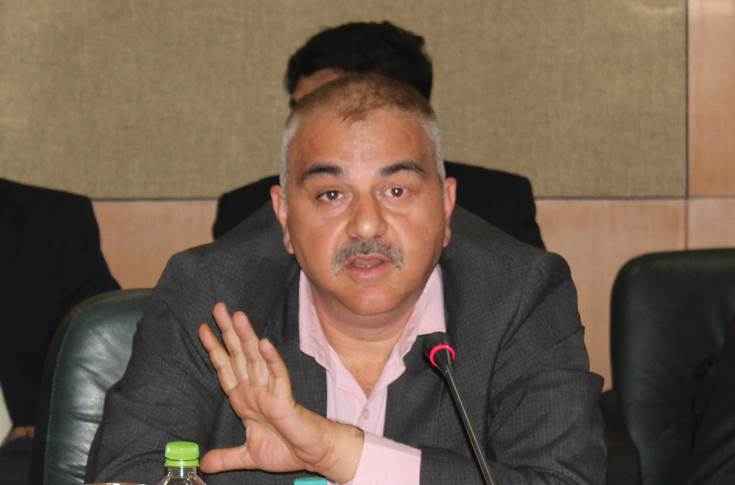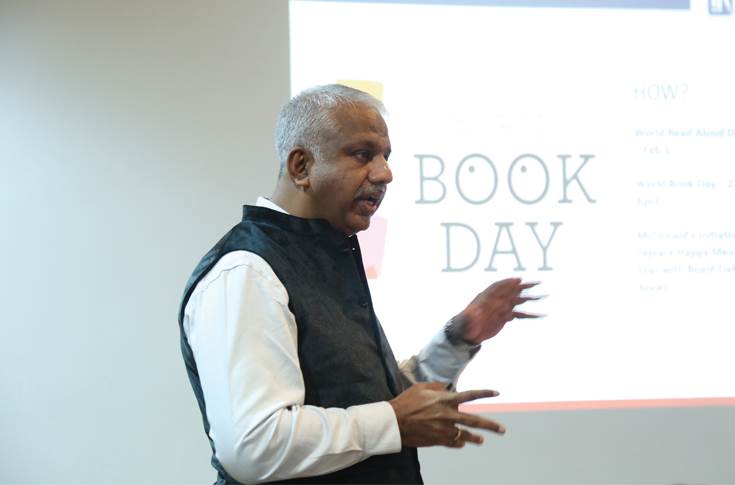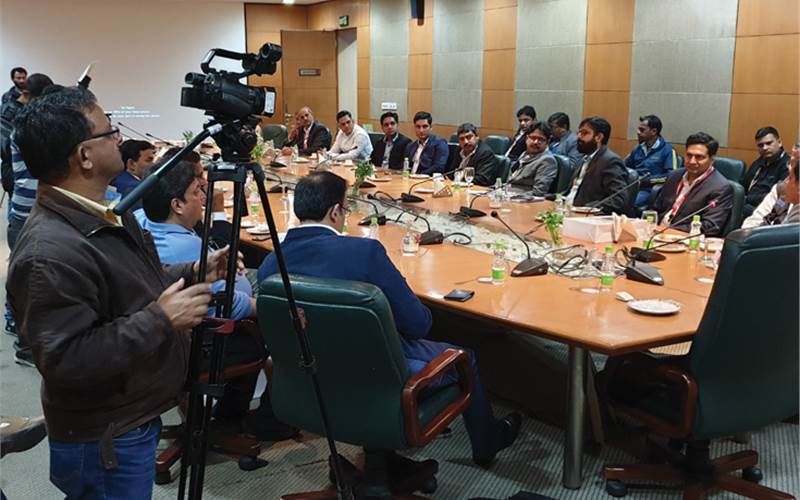Publishing and printing experts brainstorm to promote reading
4 February 2019. On the sidelines of PrintPack India 2019, publishers, book printers and suppliers came together to brainstorm and create a ‘Book Manifesto’ to help boost the consumption and production of printed books in India at the roundtable discussion Book Days: Books For All. Rushikesh Aravkar reports
19 Feb 2019 | By Rushikesh Aravkar
Organised by Impel-Welbound, PrintWeek India and Henkel, the roundtable discussion focused on a three-point agenda: encourage reading, enhance cost-efficiency to make books affordable, and increase the relevance of books especially for the millennial generation.
As P Sajith, director, Impel-Welbound, kick-started the discussion, he highlighted how the Buguri community library on 1 February, the World Read Aloud Day, initiated a month-long event that involves providing children from underprivileged backgrounds to have access to books.
Sajith said, “If you think the next generation has let reading slide to the margins of their life, now is the time to act. Book Days – Books for All aims to spread the joy of reading and bolster book readership. The Book Days is a year-long engagement involving the printed book to increase readership of books and produce books cost-effectively.”
The challenge of the day, as publishing consultant Subhasis Ganguli, who chaired the session, pointed out is that the millennial generation is glued to their mobile phones and books are not their choice of leisure. To which, Neeraj Jain, managing director, Scholastic, responded, “We talk about today’s millennial wanting to use devices more. We have to take a step back and understand where did this problem start? The problem started from a generation above the millennial. It is our generation, we were not talking about books, we were not doing read-aloud to our kids, we were busy giving them devices and now they are attracted to the digital devices.”
Reading for leisure
Referring to a research study conducted by Scholastic, two years ago, Jain spoke about three factors that impact reading among children. “If children are read aloud to, they are more likely to pick up the habit of reading books. The second very important factor in inculcating reading habit among children is having a reading role model and in our society that role has to be played by a parent. The third factor is the choice of book. 82% of the kids said if we pick up a book ourselves, we are more likely to finish it. If you are able to work on these three factors, you can fight the digital conundrum,” said Jain.

Neeraj Jain of Scholastic
To promote reading habits among all classes and castes and communities, one of the key requirements is to make books more affordable. At the conference, the stakeholders discussed ways and means to make this a reality. It was unanimously agreed that the printing and publishing industry has reached to a point where good quality is a default requirement, which cannot be compromised, what needs attention is making processes efficient so as to reduce the per book price.
Hachette India’s Priya Singh addressed the topic of price sensitivity extending the scope of the issue beyond the domains of printers and publishers. “India is a very price sensitive market, especially for the children books. Children generally prefer attractive and visually appealing books, making such books in the price range that is affordable for the Indian market doesn’t work out. I think the manufacturing industry has to come up with a solution to make books cheaper.”

Priya Singh of Hachette India
“If we do not want our children to get hooked to an iPad or a digital device, the price of books has to be lower. Maybe somehow, the government can undertake an initiative where the children books are mass produced and made cheaper. There has to be a campaign that starts at a state level wherein the government can subsidise certain things so that children books are made available at a lower price point.”
Another way to ensure the spread of printed books is to make them compatible with audio-visual communication. This subject too was under discussion.
MN Pandey of Avantika Printers in his show-and-tell presentation highlighted various possibilities of innovation in a humble book. It was also discussed how digital technologies like augmented reality can make books more effective.
Amit Sharma of Harper Collins countered the argument. He spoke at length about how books allow one’s imagination to take flight, makes one think, ruminate, and trigger one’s imagination. He said, “Instead of incorporating digital technologies such as augmented reality or any other digital technologies, the focus has to be on how to promote the unique features of a printed book – it is a catalyst that stimulates the human mind.”

Amit Sharma of Harper Collins
Glamourising books
“Sunday ho ya Monday, roz khao ande,” is a jingle many would have heard. The National Egg Co-Ordination Committee’s ads go back a long time, and the message has always been one of common sense: Eggs are good for health.
Everyone in the room agreed that there’s a need for a similar advertising campaign to promote reading.
Faheem Agboatwala of Hi-Tech Printing Services pointed out that the threat to books is because of the convenience provided by other media. He stressed on the need to glamourise books and print in general. “That’s what sells in India. Today, even adults refrain from picking up a book because it’s not glamorous. This can be done by means of endorsements from thinkers and celebrities or highlight some kind of a convenience or health benefits and popularise the salient features of a reading a book.”
Jain pointed out that traditional publishing has always been a B2B affair and publishers have refrained themselves from engaging with the end-consumers and also that publishers lack the budgets required for advertising campaigns. However, he stressed on the power of social media and how it can be effectively deployed for the cause. He highlighted the case of a book titled The Wonky Donkey. “Recently, a video of a Scottish grandmother’s uncontrollable giggles while reading The Wonky Donkey picture book to her baby grandson went viral. So much so that the demand for the book skyrocketed overnight.”
An under-tapped market
India remains an under-tapped book market. The publishers and printers deliberated on how to re-boot the book to version 2:0 and create a new reader. Two factors stood out: the culture of community libraries and the idea of books as a gift item.
Jain explained it best. “The libraries are dying. There are school libraries, but they are not sufficient. I think what states or the government can to do is the revival of the library system. Libraries have the power of transforming lives. This is also because books are meant not just to be read, they are prized possessions,” said Jain.
Book stores are dying too. Book buying exercise might have taken the e-Commerce way but these marketplaces can’t recreate a sense of place. The experience of browsing through a book store and discovering an interesting read is something you cannot take online.
To promote the idea of gifting a book, Impel-Welbound distributed 900 books as a gift to everyone who visited its booth. “We asked the visitors to gift the book to a child they know – and also to a child they don’t know. Imagine what will happen if 1.4 billion Indians gift a book to each other. Reading will spread to other cities and states of India,” concluded Sajith.

P Sajith, director, Impel-Welbound













 See All
See All